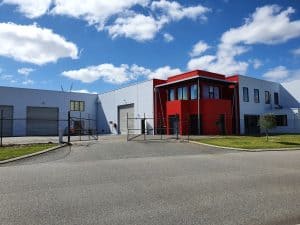
Painting metal surfaces can be a bit tricky, and there are many things you must keep in mind to ensure a high-quality and long-lasting paint job. This article will share four key subjects you should know about before starting your next metal surface project.
Selecting the right coating is important
Industrial coatings are used to protect against corrosion, protect against harsh weather, and make things look better. Metals are highly susceptible to corrosion, so coating them appropriately is important. Which coating is best for your industrial project depends on various factors, like the moisture content of the air, high temperatures, acid rain frequency, and such.
You have to take them all into consideration when choosing the coating. The finish coating is especially crucial here because it will be the first resistive layer against environmental factors that can cause the corrosion of metal.
Complying with the painting standards and environmental regulations
There are always some industry-specific standards that professionals have to keep in mind while performing their job. When coating metal surfaces, you must follow all of the rules in the Australian Standard AS/NZS 2311:2017 Guide.
For iron and steel surfaces, for example, the guide recommends 1-2 coats of metal primer and 2 coats of full gloss solvent-borne paint. For aluminium and copper, it’s two coats of latex paint. This, along with all the environmental regulations specific to metal coatings, must be known.
It’s also important to comply with various rules and standards of the industry, like selecting the most suitable paint coating, coming up with the best method to go about the painting, and figuring out how to dispose of the leftover paint and other harmful chemicals.
Film thickness and what it depends on
More than simply choosing the right coating is required; you also have to make sure the film thickness for each component is properly specified. This is because film thickness contributes to increasing metal coatings’ permeability to corrosives.
Every component may have different film thickness requirements. Usually, it will depend on the weathering resistance, chances of corrosion, and durability of the coating. It also depends on the purpose of the industrial project.
To make sure the structures or parts last as long as possible, you must first treat them with primers that stop corrosion and water repellents. Afterwards, you have to put another layer of paint on it to provide it with the film thickness required.
The various factors affecting painting operations
Any painting operation, whether it’s over a metal surface or not, tends to be quite sensitive to surrounding factors. This applies even more to metal surfaces, which are highly susceptible to corrosion. Air pollution, water pollution, safety, and disposal of contaminants are some of the key issues that may affect a procedure.
The weather and temperature also end up being issues. Most professional painters wouldn’t and shouldn’t agree to do the job if the temperature is below 40 °F or above 85 °F. And obviously not when the forecasts say it’s going to rain, snow, or be foggy.
It’s important to consider every little environmental factor before starting the job. It will not only help you finish the project without any extra problems, but it will also make it last longer and look better.
So, keep these points in mind to get the best results out of your paint job, and you’ll be good to go.







